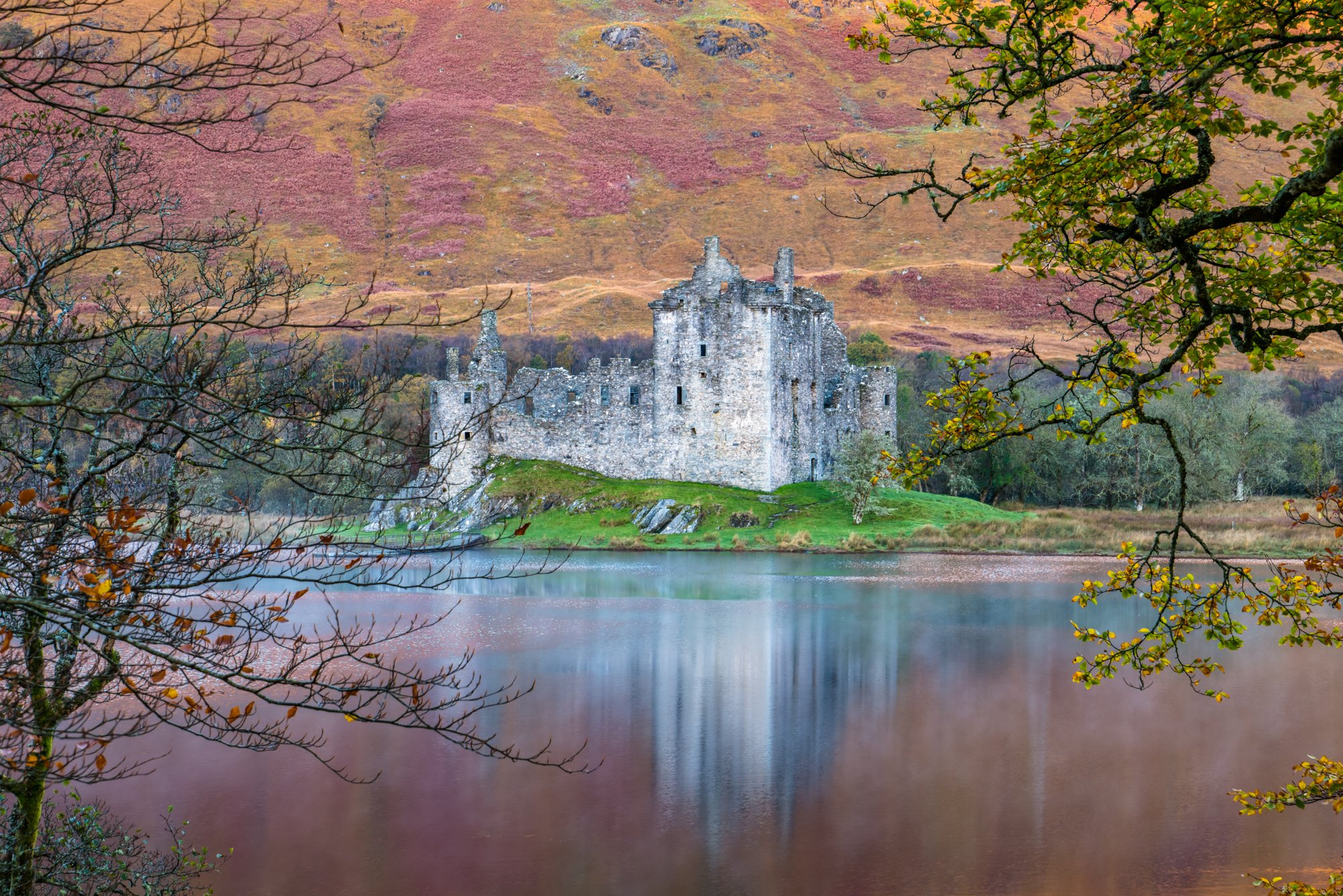Sunrise at Kilchurn Castle
Each day dawns as the sun peaks just above the horizon, glorious golden rays illuminating the earth. Every human heart is lifted at sunrise as a marvelous spectacle of light and color unfold.
Standing absolutely still and just gazing, our eyes take in swift changes in hue, tones and luminosity, at first barely perceptible and then all at once, combined with shifting shadows and brighter light, the visual spectrum goes from subtle to sublime. The Impressionist painters of the 19th Century were obsessed with capturing these fleeting qualities of light, color and mood with their short brush strokes, fluid compositions, and spontaneous expressions. Their work forever changed the way we depict the natural world. For the photographer, such rapid changes in the light and atmospheric conditions pose particular artistic and technical challenges but may result in glorious opportunities.
Ruth and I recently traveled to the Scottish Highlands. One early morning shoot brought me to the ruins of Kilchurn Castle on the edge of Loch Ewe in the western province of Argyll & Bute. Once the seat of the powerful Campbell clan, the 15th century castle was captured by the English and used as a garrison in the second Scottish uprising in 1745 (for those Outlander fans!) It was abandoned soon after the failed Scottish rebellion when the Campbell clan moved their seat to the larger Taymouth Castle in Perth & Kinross. Kilchurn Castle promptly fell into disrepair with the coup de grace brought on by extensive lightning strikes in 1760. By 1770 it was completely unroofed and abandoned. Today Kilchurn is an impressive landmark managed by Historic Environment Scotland and open to intrepid visitors.
The traditional photographic view of the castle is from the northeast, affording a side view of Kilchurn at the edge of Loch Ewe buttressed by the mountains. I decided to find an alternative approach and after a careful pre-dawn exploration settled on a commanding spot in an elevated copse of woods to the north, providing a direct frontal view of the castle ruins with Loch Ewe in the foreground and the mountains receding into the background. The composition was both innovative and pleasing but what intrigued me most was the potential interplay between the foreground (loch), the mid ground (ruins) and the background (mountains) when the sunrise came up.
At first light the hues were subdued, soft ochre and mauve on the mountainside, the castle chalky stones obscured by shadow, the tips of the foreground leaves just touched with brilliance.
In the next moment all was ablaze - bright orange sunbeams bathing the hills reflected in the Loch as if the water were burning. Deep violet shadows lurked behind the now grey castle. The background lit up the entire view.
And then within minutes everything shifted again. The scene was then awash in golden luster, shadows opened up, highlights glistening on the far-off trees in the background, while the foreground leaves almost recede into somber obscurity. In the third exposure the bright sunlight bathes the entire scene and then a minute later, we experience the decisive moment in the fourth exposure when the sunlight focusses directly on the castle ruins themselves bringing them to life, while all else settled into flatter and less radiant tones.
I used my new Leica SL2 with a Vario-Elmarit-SL 24-90mm f/2.8-4 ASPH @ 90mm securely atop my Gitzo 1127 Mk2 travel tripod and Kirk BH1 ball head. The four pictures were recorded over an intense 17 minute period in Aperture priority. The stops ranged from 13, 14, 11 and 9 with the respective speeds of 1/5, 1/8, 1/50 and 1/100. The ISO remained constant at 400.
Each moment was extraordinary for me as a photographer, but the entire series feels more meaningful than any single view: While each individual photograph presents a singular instance of light and time, I feel that the four pictures displayed as a quadriptych, produce a more powerful impressionistic rendering of sunrise.
I will leave it to you dear reader to assess the dramatic changes experienced during this memorable and brief interval.




